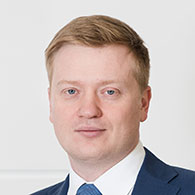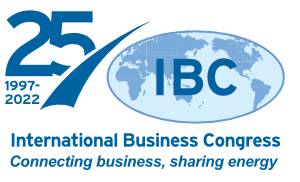WINNERS OF THE COMPETITION
FIRST PRIZE WINNER
MR. ZHANG CHAO

Country: People’s Republic of China
Nomintaion / Research Area: Liquefied Natural Gas (LNG)
PI Institution: CNOOC Petrochemical Engineering Co., Ltd.
Proposal Title
RESEARCH AND APPLICATION OF UNITED PROCESS: LIGHT HYDROCARBON RECOVERY AND CRYOGENIC POWER GENERATION OF LNG.
An integrated process of light hydrocarbon recovery from LNG and power generation with cold energy is introduced. The process is designed for an LNG station with a capacity of 3,000,000 tons per year in a coastal province in China. Unlike conventional LNG plants which mainly focused on producing purified hydrocarbon products, the proposed process capable of producing high-value light hydrocarbons and generating power with cold energy in one united plant With the application of advanced heat-exchange design on distillation units, the quality of hydrocarbon products is enhanced, while increasing the energy recovery efficiency. The simulation results demonstrated significant yields of ethane (94.16%) and propane (91.36%) with energy consumption substantially reduced. The refined methane at a remarkable purity of 98.99% is recovered in a Rankine circle as the cooling source, where a mixed working fluid is introduced to generate power at high energy efficiency. The mixed working fluid is designed at a perfect ratio to fit with the vaporization of LNG in a gentle process as to increase the energy efficiency. Compared to conventional processes, this technology exhibits excellent performance in products quality with a considerable reduction in investment in equipment purchases and energy consumption.
AWARD: ₽ 1 000 000 in unrestricted funds
SECOND PRIZE WINNER
MR. OLEG N. SYCHEV

Country: Россия
Nomintaion / Research Area: Gas Transportation and Storage
PI Institution: JSC “Severstal Management”
Proposal Title
“DEVELOPMENT AND IMPLEMENTATION OF THE TECHNOLOGY OF THE PLATE MANUFACTURING FOR THE LARGE DIAMETER PIPES MADE OF STEEL WITH GRADE X70 FOR THE CONSTRUCTION OF THE SECTIONS OF THE GAS PIPELINE “POWER OF SIBERIA” IN THE AREAS OF ACTIVE TECTONIC GAULTS”.
A new technology of rolled strip production made from X70 steel grade with thickness up to 40 mm for large diameter pipes used in the “Power of Siberia” pipeline project in the areas of active tectonic faults was designed and developed. A new technology of thermomechanical processing on the Severstal’s heavy plate Mill 5000 was proposed. That, combined with innovative chemical composition of steel and technological operations during reprocessing stage allows to satisfy new customer requirements to finished products, namely to provide an increased level of deformation capacity of rolled products and large diameter pipes, which helps to preserve specified mechanical properties after thermal and thermodeformational impact and to improve pipeline earthquake resistance through increased deformability of pipes in general. Steel microstructure consisting mainly of undercooled austenite diffusionless transformation products, with equal distribution in the ferritic matrix was also analyzed. A new way of retrieving a structure without changing the existing mill equipment and increasing alloying costs was examined. It is based on stopping the finishing stage of rolling in the header of the critical temperature interval and subsequent accelerated water cooling in an spray unit, discontinuing at a temperature below the bottom border of the subcooled pool film boiling interval.
AWARD: ₽ 250 000 in unrestricted funds
MR. GLEB A. DEREVYAGIN

Country: Russia
Nomintaion / Research Area: Gas Transportation and Storage
PI Institution: Limited liability company «Scientific production association «Vympel»
Proposal Title
NEXT-GENERATION SINGLE-LINE GAS METERING STATION.
A newly conceived next-generation single-line gas metering station (GMS) based on a large diameter (DN1400) “Vympel-500” ultrasonic flowmeter with an in situ verification unit has been created and tested. Development of this solution has included: – design and manufacture of a DN1400 PN100 8+8 channel ultrasonic flowmeter; – design and creation of 8-channel reference flowmeters (DN500 and DN1000); calibration of these on high pressure gas test rigs in Russia and Netherlands; – design, manufacture and certification of the test rig “Vympel-80000” for the calibration of large diameter (DN700-DN1400) flowmeters. This test rig generates volumetric flow rates from 800 to 80000 m3/h with an expanded uncertainty of 0.3%. There is no analogous testing rig in Russia or in the rest of the world. Field testing of the prototype single-line gas metering station was performed from June 2015 to November 2017 at the “Donskoye LPUMG” branch of “Gazprom Transgaz Moscow”. The main point of the research work has been the comprehensive investigation of the metrological characteristics of the gas metering station, the reference flowmeters and the calibration test rig. This research demonstrated the metrological traceability of an ultrasonic flowmeter DN1400 to the primary state reference facility by means of a “Vympel-500” reference flowmeter and the “Vympel- 80000” calibration test rig.
AWARD: ₽ 250 000 in unrestricted funds
THIRD PRIZE WINNER
MR. JUNG-GYUN KIM

Country: The Republic of Korea
Nomintaion / Research Area: Hydrocarbon Exploration and Production
PI Institution: Korea Gas Corporation (KOGAS) Research Institute
Proposal Title
EFFECT OF PROPPANT SIZE AND VOLUME ON FRACTURE PERMEABILITY IN HYDRAULICALLY FRACTURED SHALE GAS RESERVOIRS.
This study presents the measurement of fracture permeability with different proppant size and volume in fracture and overburden pressure to investigate changes of fracture permeability by proppant placement in a shale gas reservoir. Based on the experimental results, modified equation for fracture permeability was proposed to involve the effect of proppant embedment in a simulation model. Fracture permeability was experimentally studied by considering the changes in overburden pressure with varying proppant size and volume. Based on the experimental results, we proposed a modified equation for fracture permeability that considers the effect of proppant distribution. Decreasing the proppant volume significantly reduced fracture permeability caused by overburden pressure. In addition, reducing the proppant size increased the overburden pressure, contributing to the decrease in fracture permeability. To quantify the experimental results, a modified expression for calculating fracture permeability based on the proppant size and volume was proposed. The modified equation can be used to evaluate gas production performance in shale gas reservoirs.
AWARD: All-expense Paid Trip to a Scientific Event of His Choice
Other awards included:
- Golden and silver pins
- Free one-year subscription to the Gas Industry Journal
- A free publication at the Gas Industry or Territoria NEFTEGAS Journal
- “Energy of the Future” book provided by the Global Energy Association


